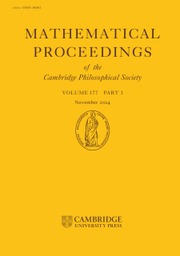Crossref Citations
This article has been cited by the following publications. This list is generated based on data provided by Crossref.
Chisnall, G. A.
1956.
A modified Chebyshev-Everett interpolation formula.
Mathematics of Computation,
Vol. 10,
Issue. 54,
p.
66.
1958.
Reviews and Descriptions of Tables and Books.
Mathematics of Computation,
Vol. 12,
Issue. 61,
p.
61.
Albasiny, E. L.
1961.
The use of associated Legendre polynomials for interpolation.
Mathematical Proceedings of the Cambridge Philosophical Society,
Vol. 57,
Issue. 2,
p.
288.
1963.
Reviews and Descriptions of Tables and Books.
Mathematics of Computation,
Vol. 17,
Issue. 84,
p.
459.
1966.
Methods of Numerical Approximation.
p.
203.
Fox, L.
1990.
A history of scientific computing.
p.
280.


